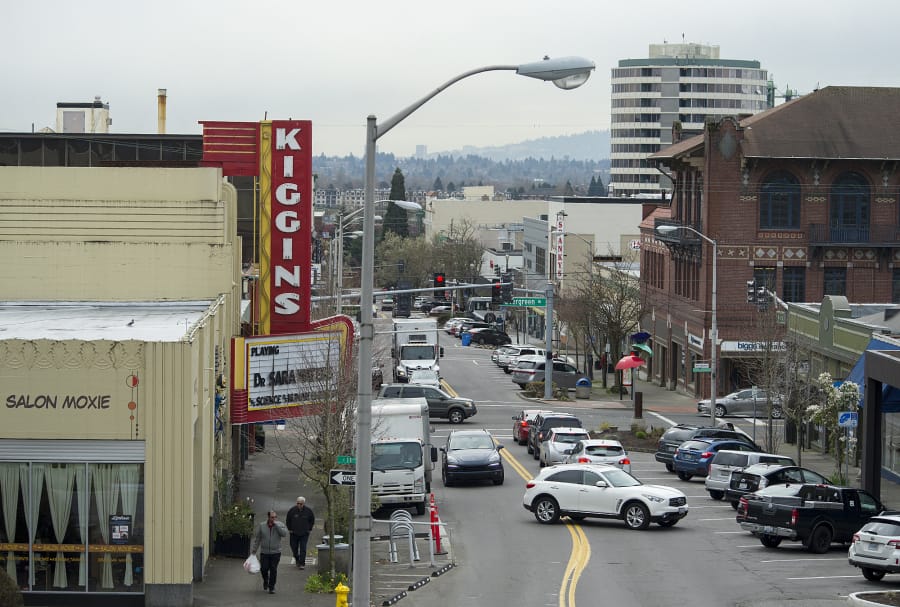It’s no secret Vancouver is trying to improve the Fourth Plain corridor, one of its most impoverished and ethnically diverse communities. But if the city takes advantage of a new program known as Opportunity Zones, will it be left with a vibrant community for everyone, or will the area become a community for the wealthy?
Opportunity Zones have the potential to greatly impact economically disadvantaged communities. The designation is so new many haven’t yet heard of it. The rules for the program haven’t even been established, but community applications are due March 26.
Opportunity Zones were created in the Tax Cuts and Jobs Act of 2017. The zone designation allows investors to fund projects in these communities using capital gains and to defer or eliminate tax payments. Investors place their money into an Opportunity Zone Fund, and the fund in turn invests in designated communities.
The zones are designated by the state’s governor. The program states that up to 25 percent of a state’s census tract is eligible. In Washington, that means 139 census tracts statewide could be Opportunity Zones. Tax deferral is temporary, up to nine years, and the program ends Dec. 31, 2026.
“It’s considered to be a program that would set up untapped capital that would broaden the money that people can use to actually make good things happen in these low income census tracts and in these communities of need, as well as the ones that haven’t attracted investment,” said John Collum, economic development planner for the city. “That was the intention behind the original legislation to begin with. We think there are lots of opportunities for Vancouver to look at the use of that money.”
Clark County can recommend four tracts for the program that are essentially guaranteed, Collum said. The state broke its designations into four groupings. Sixty nine will be noncompetitive, meaning the state will designate what the counties recommend. The second grouping leaves 29 tracts for federally recognized tribes. The third reserves 31 slots for competitive submission with the remaining 10 held back for the state to assign as it sees fit.
“They didn’t exactly explain what that meant, but we think it’s just in case these areas weren’t nominated we want to make sure we get them in,” Collum said.
Vancouver is working with the county and the Columbia River Economic Development Council to determine which tracts to put forward, but topping the list is Fourth Plain and downtown.
Collum said they are also debating a focus on areas with high concentrations of employment, such as the downtown area which has numerous high tech companies.
“There might be some opportunity there to grow some jobs,” he said.
In theory, Vancouver has more than four areas to put forth. There’s strategy at play in selecting which to consider for the noncompeting group and which to reserve for the competitive designations.
“We’re trying to understand how these things would actually work, then based on the criteria for the competitive process, with the information we have, to provide what best fits the type of information they’re asking for,” he added.
Risks from aid
With so much unknown, some with the city are concerned about the future of the Fourth Plain corridor if it receives an Opportunity Zone designation. There’s a risk of further gentrification depending on what kinds of investment occur.
“We’re very mindful of that. We’d love to be able to revive parts of the area without doing anything that leads to wholesale gentrification,” said Andrea Pastor, Fourth Plain project manager. “It would be terrible if we make investments in an area only to see the people in the area not able to use them.”
Investments in things like affordable housing would be welcome, Pastor said.
“The BRT (Bus Rapid Transit) is a massive investment, and it makes sense to put more housing in that corridor,” she said.
To further encourage housing development, Pastor said the city has started discussing alternatives to existing code. Allowing housing on the ground floor, for example, might spur more development the city wants to see. At the moment, construction in the Fourth Plain corridor is required to have multiple-use space on the ground floor.
“The fact of the matter is, there are lots of projects people want to get done. It’s simply a matter of having a lot more capital investment,” Pastor said. “If this is the thing that gets more of those projects off the ground, that would be a good thing.”
That doesn’t mean any development is good development, however, she said.
“We’re waiting to see what the rules would be from treasury, but as of right now there is some obscurity as to how investors even look at the program,” Pastor said. “Commerce told us the investors would most likely be looking for the highest and most quick returns on investment. The reality of the situation is that isn’t going to be a lot of low-income areas.”
It begs the question, she added, if it even makes sense to designate an area where the returns investors seek won’t happen.
With the deadline a mere two weeks away, Collum said the city is focusing on selecting the best areas and awaiting further information.
“We still have, I would say, a fair bit of work to do to bring this together,” he said.




